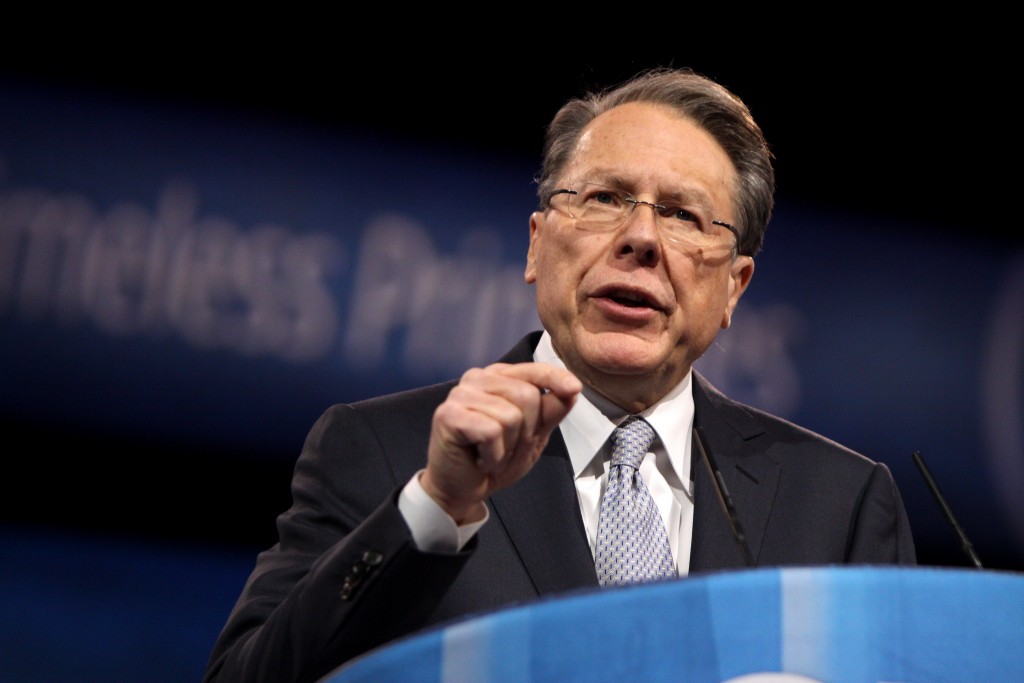“The only way to stop a bad guy with a gun is a good guy with a gun.”
It’s a phrase we’ve all heard before—on the news or scrolling through our Facebook feeds. It’s been circulating for at least four years, ever since NRA executive vice president Wayne LaPierre first said the phrase at an NPR news conference following Sandy Hook. It appeals to a simplistic (if zero-sum) binary: good versus evil. As in any action movie worth its salt, there will always be a hero waiting to swoop in and save the day, killing the bad guy and getting the acclaim.
Life, however, isn’t that simple, as events earlier this summer in Dallas prove. A trained former military gunman ambushed a massive crowd, aiming for police among a group of protesters. The shooter crossed several blocks, eventually making a last stand in a building on the El Centro College campus. His movements made it impossible to determine the precise number of shooters. Meanwhile, at least 20 armed protesters on the ground added to the chaos and confusion.
Five police officers were killed, and nine others were injured, as were two civilians on the scene. In the end, it wasn’t even a gun that brought an end to the violence, but a bomb, aimed by a police robot at the lone gunman.
By the NRA’s standards, the last place a shooter should have succeeded in committing a massacre would be in a heavily armed crowd. However, the roughly 100 police officers present were unable to stop the extremely mobile, well-prepared gunman.
Following the shooting, many prominent Republican leaders who usually respond to mass shootings by wishing there had been more guns on the scene were conspicuously silent. In practice, the promised success of armed opposition to an active shooter once again proved more difficult than some might suppose.
Nevertheless, following shooting after shooting, the NRA has continued to peddle the same tired good-guy myth. Interestingly, NRA revenue rises following each successive mass shooting. In fact, following the Sandy Hook shooting, NRA profits increased by almost $100 million, and membership increased by hundreds of thousands, while firearms sales soared.
The NRA has a sizeable online store, offering hardware and accessories from the “American Hobo Concealed Carry Handbag” (which comes in black, deep red, and cognac) to customizable NRA collegiate rings to a “flashbang holster” meant to be worn on a bra for constant readiness. They’re not just selling merchandise—they’re selling a lifestyle. This dangerous glamorization of deadly weapons contributes to the deaths of thousands each year, whether through accidents, suicide, or homicides by people who were good guys, until they weren’t.
At the same time, the combination of glorifying gun usage and promoting action encourages civilians to attempt what even trained professionals like police often can’t do: confront active shooter situations when taken by surprise, with little to no intel on the shooter’s intentions. In major cities like New York City and Los Angeles, the measured hit rates of police, according to Firearm Discharge Reports, hover far below 50 percent, some years dipping into the teens. This statistic doesn’t imply police are poor marksmen; it merely reflects the stressful, difficult, and dangerous reality of confrontations, unmatched in a shooting range or training situation. By telling unprepared civilians it’s their responsibility to be heroes, the NRA contributes to the possibility that “good guys” add to the confusion at the crime scene. In the wake of the Dallas shootings, Police Chief David Brown said, “We don’t know who the good guy is versus the bad guy if everybody starts shooting.”
Even in more private situations, like confronting a robber in your home, the popular conception of the outcome is far from the truth. According to Mother Jones, for every time a gun is used in self-defense, there are seven assaults, 11 suicide attempts, and four accidents in or around the home. In reality, you’re far more likely to die at the hands of your own gun than you are to protect your family by shooting somebody else.
The other side of the equation—the “bad guy”—is no less specious. The NRA treats it as a foregone conclusion that bad guys will always have guns; even were the government to ban them, the black market would fill the void. Yet this assumption ignores the rising costs of illegal weapons—a gun that would cost no more than a few thousand dollars in America costs upwards of $15,000 on Australia’s black market, which would hinder even the most criminal element of American gun owners. This isn’t to say we should ban and recollect all guns like in Australia, just that the NRA propaganda surrounding illegal gun purchase is highly unrealistic, setting up a false dichotomy between good guys and bad guys where alternatives exist.
One thing is clear: it’s time to lay aside the NRA’s favorite axiom and the shooting to the professionals while focusing on changing gun policy. Real life isn’t target practice. Shootings are messy, chaotic, confusing, and imperfect. Good guys with guns can’t always save the day without endangering themselves or others.
Image Credit: Gage Skidmore/Flickr
